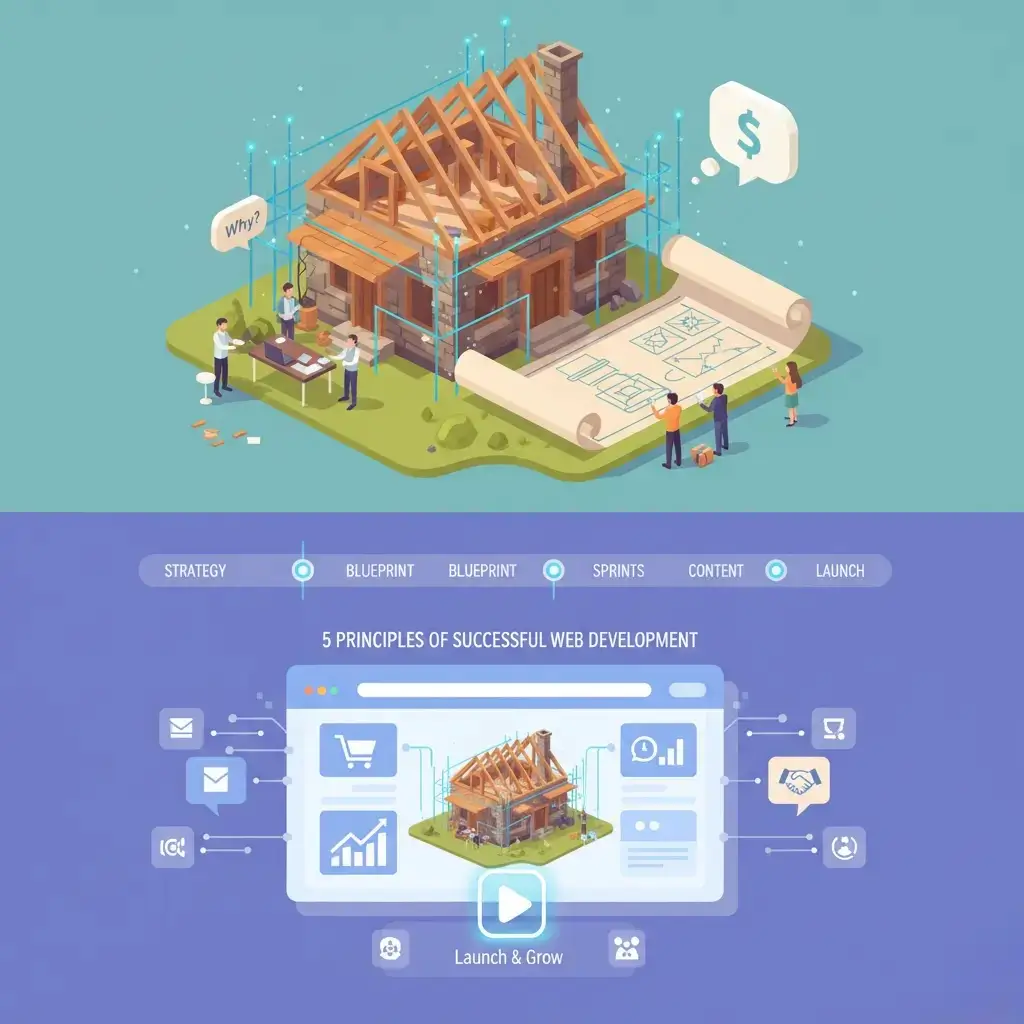In the last article, we figured out that for serious business tasks, custom development is like building your own house. You’ve decided to build. The next logical question is: how do you make sure the construction doesn’t turn into chaos, and the house ends up exactly as you dreamed?
Many people think that a website’s success depends on programming magic. But in reality, code is only 50% of the success. The other 50% is a clear process and an honest partnership. Let’s break down 5 simple principles that distinguish a successful project from a source of headaches.
1. We Start with “Why?”, not “What to do?” (Strategy)
Imagine you hired builders, threw a pile of money on the table, and said, “Build me a beautiful house!” What would you get? Most likely, a house that the foreman likes, not you.
What we do: We don’t just fill out a brief. We talk in detail about your business: who is your ideal client? What “pain point” are you solving for them? How exactly should the website help you earn or save money? Together, we become the architects of your project.
Why it matters to you: This stage saves up to 80% on future rework costs. We approve the plan before construction begins, rather than tearing down walls after they’re already up.
2. Blueprint First, Wallpaper Later (Prototyping)
No one starts applying wallpaper to a bare foundation. First, you need walls, a roof, a floor plan. In web development, this role is played by a prototype.
What we do: We create a “skeleton” of the future site—a simple, interactive black-and-white diagram. It has no beautiful pictures or colors, but it has all the buttons, blocks, and pages. You can “walk through” this skeleton and see if it’s user-friendly.
Why it matters to you: Making changes to a blueprint is ten times cheaper and faster than moving walls in a house that’s already built. You’ll personally ensure the site’s logic is clear before the designer even starts working their magic.
3. We Build Floor by Floor, Not All at Once (Iterative Development)
The biggest fear of any client is to pay a deposit and then be met with three months of silence, wondering what’s happening. This is a path to disappointment.
What we do: We work in short bursts called “sprints” (usually 1-2 weeks). At the end of each sprint, you see a concrete, working result: a finished homepage, a working contact form, a product catalog.
Why it matters to you: Complete transparency. You always know what stage we’re at and can provide feedback along the way. No unpleasant surprises at the end. You are a full participant in the process, not a bystander.
4. We Build the Walls, You Bring in the Furniture (Content)
I can build you the perfect house: with a solid foundation, straight walls, and a reliable roof. But for it to become cozy and livable, you need to bring in furniture and fill it with life. In the case of a website, the furniture and life are your content: texts, photos, product information.
What we do: I help determine what content is needed for each page to make it “sell.” But the expertise in your field is yours. No one can talk about your product better than you can.
Why it matters to you: Understanding this principle turns your site from a beautiful frame into an effective sales tool. After all, it’s the words and images that persuade a customer to take the next step.
5. Launch is Just the Beginning (Support and Growth)
Getting the keys to a new house isn’t the end; it’s the beginning of a new life in it. The same goes for a website.
What we do: We don’t say goodbye after the launch. We analyze how visitors behave, what they like, and what gets in their way. Based on this data, we plan further development: we improve pages, add new features.
Why it matters to you: You get not just a set of files, but a living business tool that is constantly improving and bringing more value. And a reliable partner who helps with that.
Conclusion
As you can see, creating a website is not a mystery, but a clear and manageable engineering process. My job is not just to write code, but to guide you through all these stages, protecting you from risks and guaranteeing a result that your business needs.
